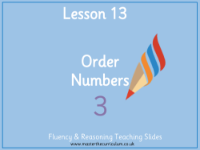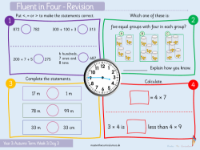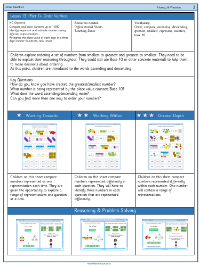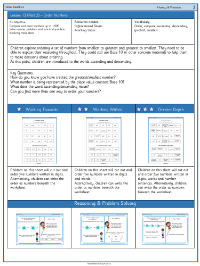Place value - Order numbers - Planning
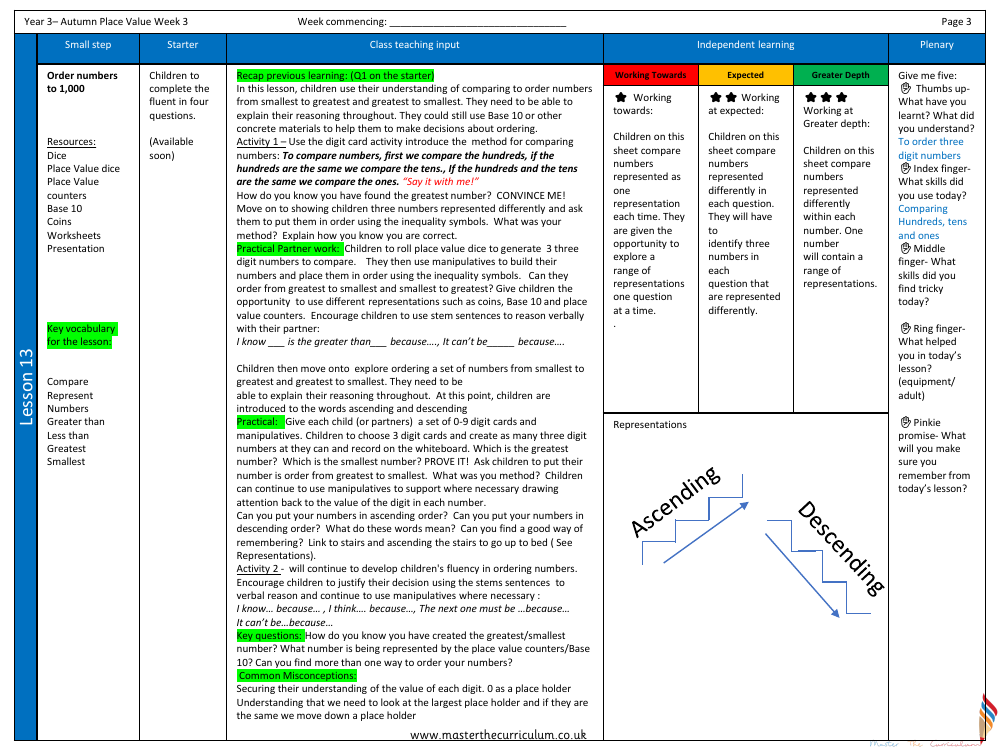
Maths Resource Description
In a Year 3 mathematics lesson centred on place value, students are tasked with ordering numbers up to 1,000. The lesson utilises a range of resources, including dice, place value dice, counters, Base 10 materials, coins, worksheets, and a presentation to aid learning. The key vocabulary for this session includes terms such as 'compare', 'represent', 'numbers', 'greater than', 'less than', 'greatest', and 'smallest'. The lesson begins with a starter activity where students are encouraged to complete 'fluent in four' questions. They recap previous learning by using their understanding of number comparison to order numbers from the smallest to the greatest and vice versa, with an emphasis on explaining their reasoning. A digit card activity is introduced to compare numbers by examining the hundreds, tens, and ones places in sequence. Students are challenged to justify why a number is the greatest using the phrase "Convince me!" and to use inequality symbols to show the order of numbers.
Practical partner work follows, where students roll place value dice to create three-digit numbers and use manipulatives like Base 10 and coins to physically represent and order these numbers. They practice ordering both from greatest to smallest and smallest to greatest, using stem sentences to articulate their reasoning. The concept of ascending and descending order is introduced, and children are encouraged to remember these terms by associating them with the action of ascending stairs. In the second activity, children's fluency in ordering numbers is further developed as they use digit cards and manipulatives to create and order three-digit numbers, justifying their decisions with reasoning. They are prompted with key questions to deepen their understanding of place value and the significance of zero as a placeholder. The lesson concludes with a reflective 'Give me five' exercise, where students assess what they've learned, the skills they've utilised, and what they found challenging, ensuring they remember the key points from the lesson. Differentiated worksheets are provided to cater to varying levels of ability, from securing basic understanding to exploring greater depth in comparing numbers with different representations.

